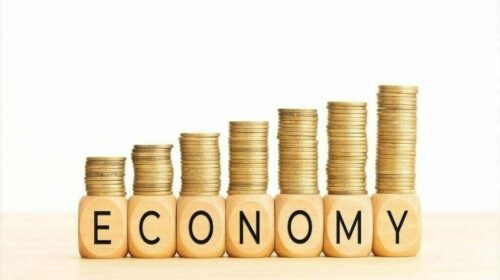The ongoing ‘default’ discussion is a favourite political and economic pastime. After the first decade since independence, Pakistan never got rid of a default threat. It will remain exposed to bankruptcy risk due to a continuously rising debt and the cost of servicing factor. It will remain dependent on external borrowing unless economy’s direction is not corrected.
Pakistan’s financial condition has become precarious because our economic managers have never made any effort to transform the economy by bringing about the required structural changes. The resulting sharp surge in current account deficit above the projected levels is bound to exert more pressure repeatedly on foreign exchange reserves that causes macroeconomic instability.
This is why lenders will always demand austerity and will ask the government to apply brakes to the ever-increasing spending.
This ever-increasing expenditure exerts extreme pressure on the government as it is required to issue paper/security as collateral and hence, 80% of the liquidity is diverted towards investments in PIBs, T/bills & sukuks.
This is the reason why SBP has to regularly inject funds to generate liquidity through its open market operations (OMOs) and Shariah-compliant Mudarabas, which total about Rs 568.85 billion at present, while banks’ holdings of GoP Marketable Securities (Outstanding Stock Basis – Face Value) have reached Rs 16.885 trillion. This practice has been in vogue since decades. It often leads to depreciation of PKR, higher inflation and policy rate hikes. Austerity multiplies the problem, which is linked to lending.
Furthermore, as the economy does not generate profit, the borrowing pressure start mounting due to increased cost of debt servicing and profit repatriation.
Pakistan opted for the easiest option: short-term borrowing. The problem with short-term sizeable borrowing is a risky proposition due to quick maturities, which is now hurting. Many would argue that external debt-to-GDP ratio is still below 50%.
But it is proving that this is not a useful tool to gauge the economy. It is because the size of borrowing is much larger than the size of loan packages often offered. If we take a deeper look into the economic data, it suggests that since more than 6 decades Pakistan was never self-sufficient or enjoyed a budget surplus.
Every government during its tenure made false claims and relied on external borrowing because the economy never generated real income. The gains made by successive governments are of micro levels. The economy demands substantial growth at macro level, which never happened.
This is why our External Debt, Domestic Debt, Circular Debt, Fiscal Debt, Balance of Payment (BOP), Liquidity injection through OMOs, Liquidity, Sovereign Ratings, Inflation and Forex Reserve are all under pressure.
Another big reason for high inflation is currency in circulation (M2) and pilferage through our porous borders. Money supply too is a big ongoing problem that needs serious attention. If the authorities are able to control demand in system, it will reduce pressure on current account deficit.
That the proof of the pudding is in the eating is a fact. From 1966 to 1978, courtesy IMF, we drew SDR 100.000 or below on 5 occasions.
From 6th times & onwards that is since 1980, borrowing amounts started to surge reaching in billions of SDR or roughly around USD 5-6 billion. Concluding, Pakistan will not default.







